Pirates of the West Indies and the Indian Ocean of the second half of the XVII - early XVIII centuries
How long did pirates manage to escape justice? How long did their career usually last? And how often did they manage, having crammed treasure chests over the years of sea robbery, to retire? To answer these questions, you can bring some interesting moments of the biographies of the twelve most famous pirates of the “Golden Age” of piracy (in the extended sense), which lasted about seventy years. The conditional date of its beginning can be considered 1655, when the British seized Jamaica (which allowed the pirates to settle in Port Royal, as earlier in Tortuga), and the end date of 1730, when piracy in the Caribbean and Atlantic (and even earlier in the Indian ocean) was finally eliminated.
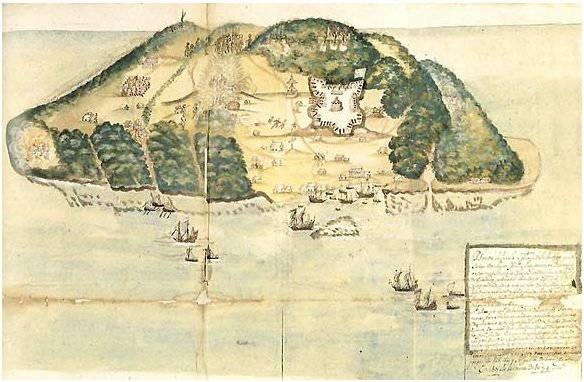
Edward Mansfield - was a privateer (received a patent from the governor of Jamaica) in the West Indies from the early 1660s to 1666. He headed the pirate flotilla. He died in 1666 from a sudden illness during an attack on the island of Santa Catalina, and according to other sources he died as a result of an attack by the Spaniards on the way for help to Tortuga.
Francois L'Olone - was a pirate captain in the West Indies. Pirated with 1653-1669. He died in 1669 in the gulf of Darien, off the coast of Panama, during the attack of the Indians.
Henry Morgan - was a pirate in the West Indies from the 50-ies of the XVII century, and from the 1667-1671. marque (received a patent from the governor of Jamaica). He was the leader of the pirate flotilla, and even received the unofficial title of "Admiral of Pirates." He died of his death in 1688 (presumably from cirrhosis of the liver due to excessive consumption of rum) in Port Royal, Jamaica.
Thomas Tew - A few years (presumably from 1690) was a pirate in the West Indies, and from 1692-1695. marque (received a patent from the governor of Bermuda). Considered the discoverer of the pirate circle. He was a pirate captain in the Indian Ocean. He died in the Red Sea near the Bab el-Mandeb Strait in September 1695 during the attack on the merchant ship "The Prophet Mohammed". Tew suffered a terrible death: a cannonball fell into him.
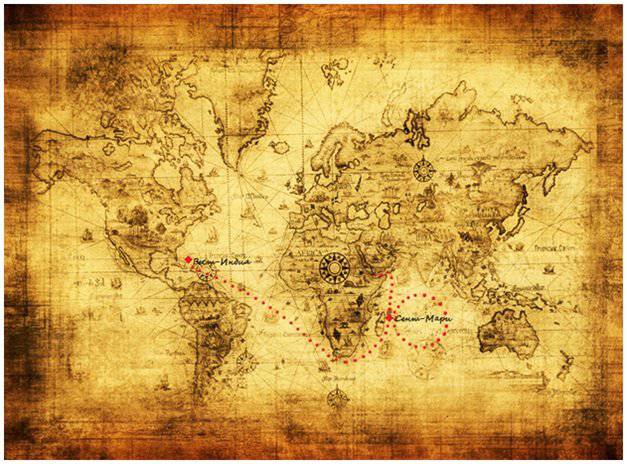
Henry Averynicknamed "Long Ben" - from 1694-1696. was captain of pirates in the Indian Ocean. After the capture of the merchant ship "Gansway" in the Red Sea in 1695 sailed back to the West Indies. Then he was in Boston, after which he disappeared. A reward of 500 pounds was assigned to his head, but Avery was not found. According to some rumors, he moved to Ireland, on the other to Scotland.
William Kidd - From 1688, he was a filibuster, and then a privateer in the West Indies (received a patent from the governor of Martinique). Moved over to the side of the British and for some time retired. In 1695, he was hired by influential people of New England to catch pirates, including Thomas Tew, and also received a privatized patent for robbing ships under the French flag. However, due to the outbreak of rebellion, he was forced to engage in sea robbery, which lasted from 1697-1699.
Voluntarily surrendered to justice. He was hanged (placed in an iron cage) on 23 in May of 1701 by a court in London for the murder of sailor William Moore and the attack on the merchant ship Kedahi merchant.
Edward Teach, nicknamed "Blackbeard" - from 1713, was an ordinary pirate from Captain Benjamin Hornigold, and from 1716-1718, he himself was a captain of pirates operating in the Caribbean and the Atlantic. He was killed in a fight with Lieutenant Robert Maynard on the deck of the sloop "Jane" 22 in November 1718 near the island of Okrakoke, near the coast of North Carolina.
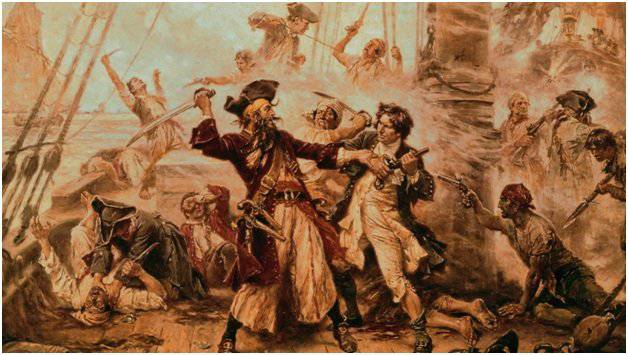
Sammuel bellamy - was captain of pirates in the Caribbean and the Atlantic from 1715-1717. The 26-27 of April 1717 drowned during the storm on the ship "Waid", along with most of the crew off the coast of Massachusetts, near Cape Cod.
Edward England - was a pirate in the Caribbean from 1717, and from 1718-1720. captain of pirates in the Indian Ocean. He was landed by a rebellious team on one of the uninhabited islands in the Indian Ocean. He managed to return to Madagascar, where he was forced to beg. He died there, in 1721, in complete poverty.
Steed bonnet - was captain of pirates in the Caribbean and the Atlantic from 1717-1718. Hanged by court 10 on December 1718 in Charleston, North Carolina, for piracy.
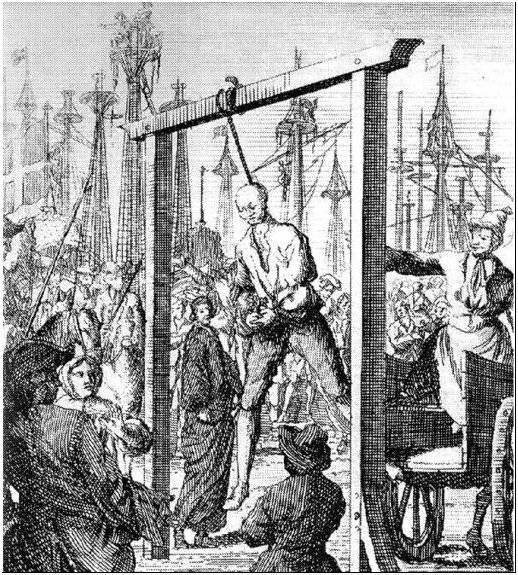
John rackham, nicknamed "Calico Jack" - was a smuggler for several years, and from 1718 was the captain of pirates in the Caribbean. In 1719, he was pardoned by the governor of New Providence Woods Rogers. However, already in 1720, he started on the old. He was hanged (placed in an iron cage) by a court of 17 in November 1720 in Spanish Town, Jamaica, for piracy.
Bartolomeo Robertsnicknamed "Black Bart" - was the captain of pirates in the Caribbean and the Atlantic from 1719-1722. 10 February 1722 was killed by a volley of grapeshot off the west coast of Central Africa, near Cape Lopez, while attacking the English royal warship Swollow.
As you can see, the life of pirates, even such notorious thugs, for the most part was short-lived. Any person who decided to link his life with sea robbery in those harsh times was almost certainly waiting for death. And those lucky ones who managed to survive lived out their lives in poverty and fear for their lives. Of these famous pirates, only Morgan (and possibly Avery) ended his life as a free and wealthy man. Only very few pirates managed to save up a fortune and retire. Almost all waited for the gallows, death in battle or sea depths.
Fiction and cinema have created in the minds of most people the classic image of a pirate with a colorful kerchief-bandana on his head, a ring in his ear and a black bandage on one eye. In fact, the real pirates looked very different. In real life, they dressed the same way as ordinary sailors of their time. They did not have any specific clothes.
Exkvemelin, himself a former pirate with 1667-1672. and who was directly involved in the famous expedition of pirates led by Morgan to seize Panama (the city), wrote:
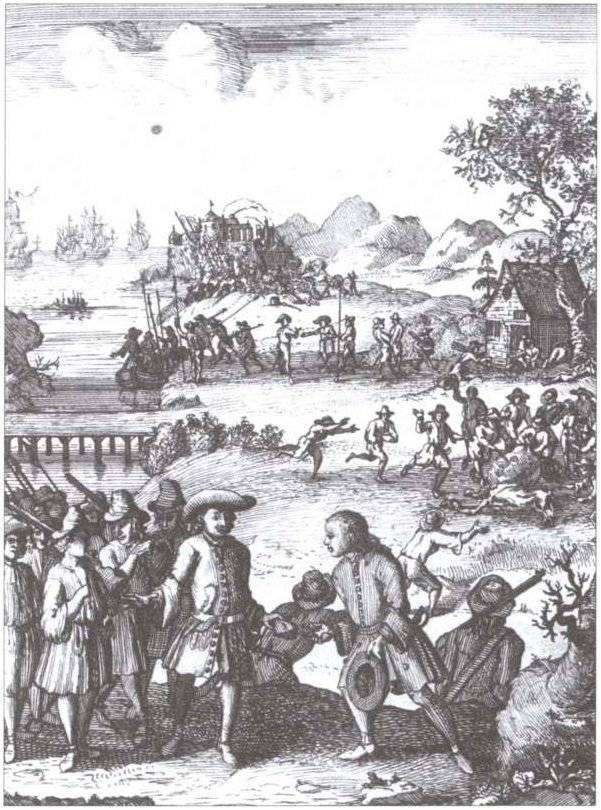
In his book "Pirates of America" 1678, Mr. Exkvemelin never mentions that pirates wore headscarves on their heads. It is logical that in the conditions of tropical heat and scorching sun, which are common in the Caribbean most of the year, wide-brimmed hats provided good protection from the sun's rays. And in the rainy season, they helped not to get wet to the skin.
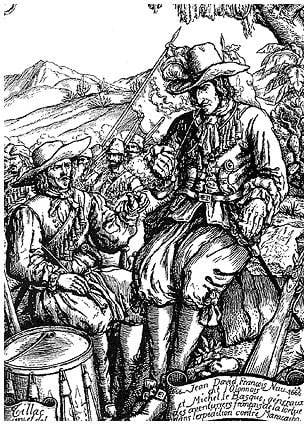
Were pirates wearing wide-brimmed hats all the time? Most likely not, because during a strong wind at the sea they would surely have been blown off their heads. Starting with 60-x. XVII century. wide-brimmed hats are beginning to be quickly supplanted by the trek-heads that have gained huge popularity. It is in cocked-up heads that most pirates are depicted in antique engravings of the late 17th – early 18th century.
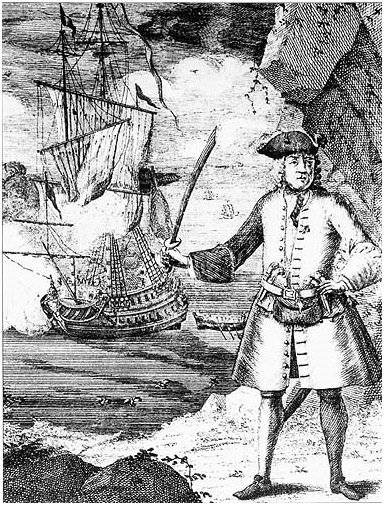
As a rule, the sailors in those days had one set of clothes in which they went to wear them completely. Then they bought a new suit. In addition, people who harbor sea robbery have always had the opportunity to take good clothes from their victims on a hijacked ship, if, of course, the pirates did not decide to declare everything hijacked by common loot and sell them to dealers in the port. And clothing, before the era of the appearance of mass production in the XIX century, was expensive. Although sometimes pirates dressed like real dandies. Thus, the famous pirate beginning of the XVIII century. Before the battle, Bartolomeo Roberts put on a bright red vest and trousers, a hat with a red feather and a diamond cross on a gold chain.
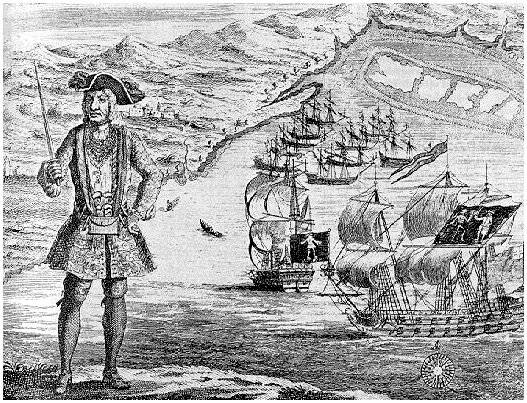
Judging by the old prints, many pirates wore a mustache, and sometimes a beard. For pirate Edward Tich, his thick and truly black beard has become an integral part of the image. Sometimes he wove ribbons into it.
In addition, he placed gun wicks under his hat, which he lit before the battle, causing the head of the pirate captain to be wrapped in clouds of smoke, which gave him an ominous, devilish look.
Even Blackbeard was wearing a crosswise, over the suit, two wide bands with six loaded pistols. He really looked frightening, considering the insane, wild look noted by his contemporaries and well conveyed by old engravings.
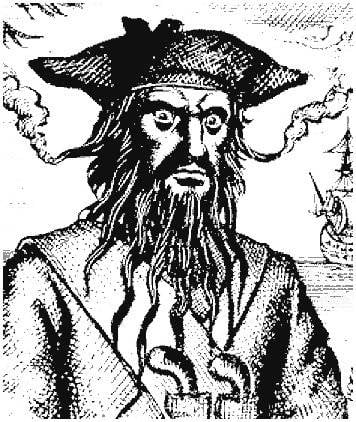
Almost all the engravings of the XVII-beginning of the XVIII century. pirates are depicted with long hair or fashionable then wigs - allonzhi. For example, Henry Morgan had thick and long hair, according to the fashion accepted at that time.
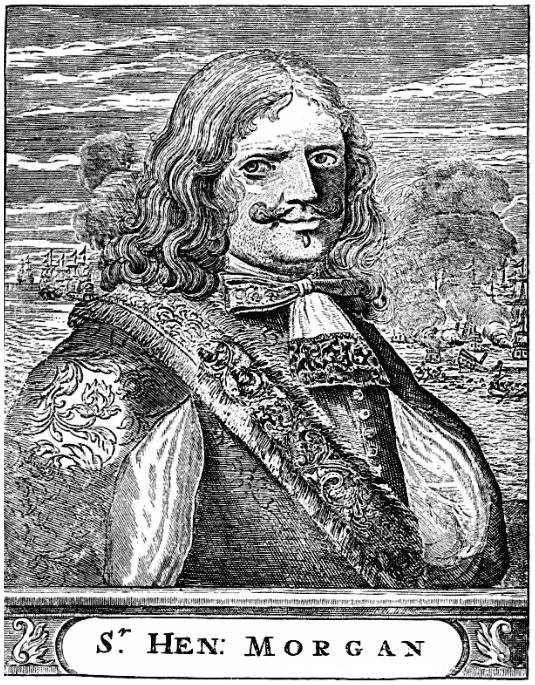
As for wigs, this thing is impractical, and it is unlikely that they were worn while swimming. In addition, wigs were expensive, most pirates could not afford, and most likely they did not need them. Rather, a good wig was a status symbol, the leaders of the pirates could afford it (before that, they took the wig away from some nobleman or merchant on a robbed ship). The captains could wear a wig (along with an expensive suit) when they went ashore in a large port to make an impression on the assembled public.
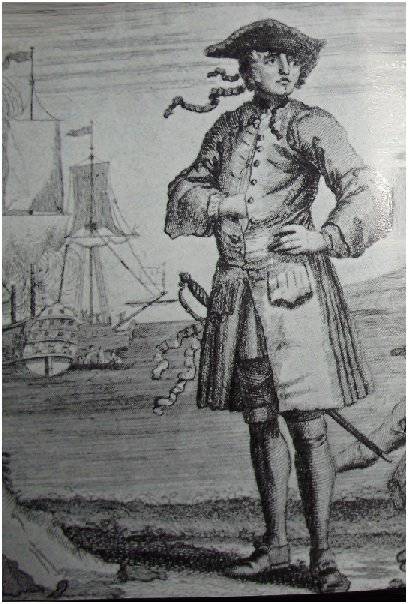
Like all sailors of the XVII-XVIII centuries, the pirates of the West Indies and the Indian Ocean wore wide trousers that reached just below the knees and were tied with ribbons. Many wore culottes - so-called "women's pants." They differed from the usual volume, as they were very wide and rather resembled a women's skirt divided in half. It is known that it was “women's pants” that Edward Teach wore (in the picture presented in the first chapter, the artist depicted Blackbeard in just such “women's pants”).
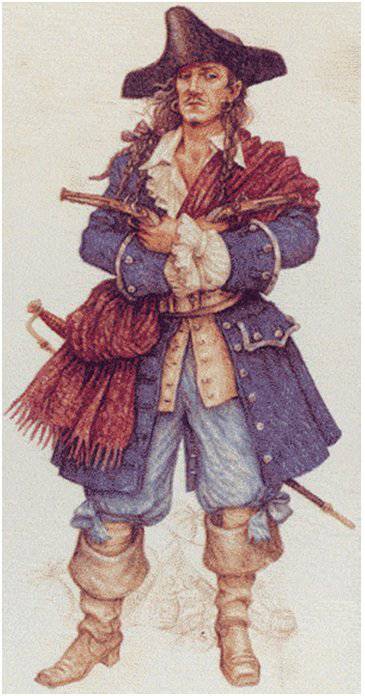
As for the rings or other decorations in the ears, in reality the pirates did not wear them, or at least no historical evidence of such a custom was preserved. They are not mentioned either by Exvemelin in "Pirates of America" 1678, nor by Charles Johnson in the "General History of Looting and Murder", perpetrated by the most famous pirates "1724, or in other historical sources. In addition, in almost all prints, the ears of pirates are covered with long hair or wigs, according to the then accepted fashion. Although it should be mentioned that a century earlier (in the 16th century) men in Western Europe preferred short haircuts and wore earrings (but not rings). But since the beginning of the XVII century. long hair comes into vogue, and along with it, jewelery in men’s ears disappears, which was also promoted by the more and more popular Puritan views in England and Holland. In this case, the men’s hair was not taken to be tied at the back of the head. They did this only if they put on a wig.
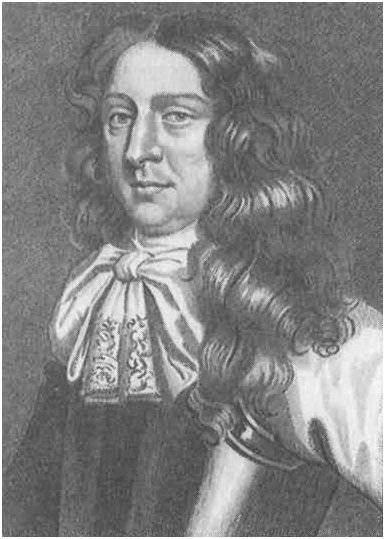
And why, it is asked, to wear rings in the ears, if under long hair or under a wig nobody sees them anyway?
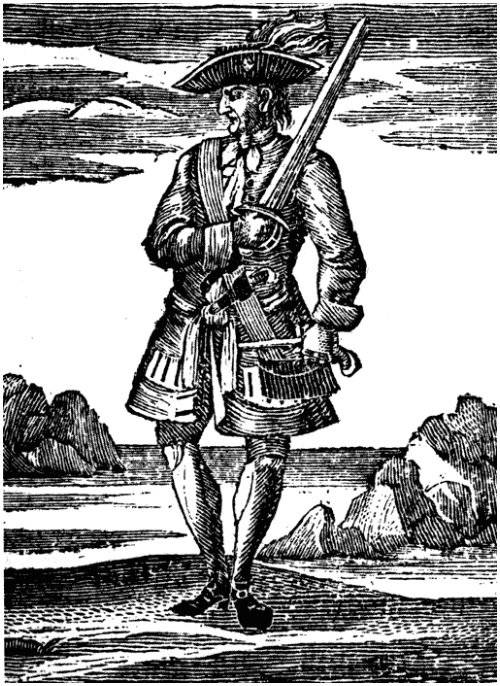
The myth of wearing a black band on a damaged eye was incredibly stable. There is no historical evidence that pirates with damaged eyes were covered with bandages. There is not a single written source and engraving of the XVII-XVIII centuries. with a description or image of sea robbers with blindfolds.
In addition, there are some written sources that indicate just the opposite - that the pirates purposely flaunted their old wounds in order to even more frighten the enemy.
For the first time, black armbands appear in fiction at the end of the 19th century, first in the form of colorful illustrations in books about pirates (Howard Pyle is considered the first illustrator to depict pirates in a colorful bandana and an earring in the ear), and later in the novels themselves sea robbers. From there, they enter the cinema, once and for all becoming an integral attribute of pirates.
Pirate laws on the sharing of production were very different and changed over time. In the middle of the 17th century, when privateering was still widespread (a sea robbery on the basis of a permit issued by a state — a letter of marque, a patent, a commission, reprisals, robbing ships and settlements of hostile countries), part of the production, usually at least 10 percent privateers (or privatirs) gave the government, which gave them permission to rob. However, often the share of the authorities was much higher. Thus, in the first privatized patent received by the captain William Kidd from the authorities of New England, the authorities' share in the mining of the expedition was 60 percent, Kidd and the 40 team respectively. In the second, obtained in 1696, the share of the authorities was 55 percent, the share of Kidd and his companion Robert Livingstone 20 percent, and the remaining quarter relied on team members for whom no salary was foreseen, except for captured loot.
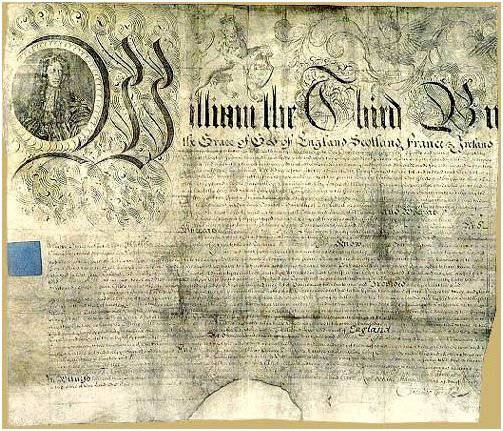
Of the remaining production, a part was given to food suppliers, armory accessories, rum and other necessary equipment (if borrowed). And finally, that part of the booty that remained with the pirates after these calculations (sometimes quite a bit), they shared among themselves. The captains received more, usually five to six shares.
With the disappearance of privateering at the end of the XVII-beginning of the XVIII century. no pirates have made any payments to the government. Although there were exceptions. So, Blackbeard bribed officials in the ports that provided him with information about the cargo and the route of the merchant ships. Other captains just gave the governors of the colonies expensive gifts from the loot (in other words, they gave bribes) for general patronage.
In addition, such captains provided the governors of friendly colonies with intelligence information about the state of affairs in the territory of the enemy and the movement of his fleet.
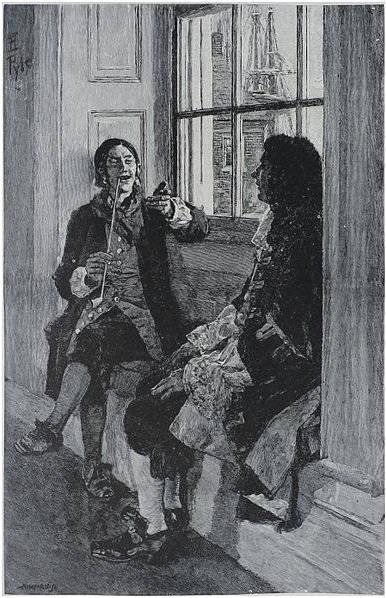
Gradually, the division of production became more democratic. At the beginning of the XVIII century. the captains usually began to receive no more than two or three lobes, and the officers even less.
This is how he describes the distribution of loot before an expedition of pirates led by Henry Morgan to Panama in 1671 of Exkvemelin, who himself participated in this campaign:
Then compensation was established for the injuries: whoever loses both hands, must receive, in addition to his share, another fifteen hundred reais or fifteen slaves (at the option of the victim); whoever loses both legs must receive one thousand eight hundred reais or eighteen slaves; whoever loses a hand, indifferently left or right, must receive five hundred reais or five slaves. For those who lost a leg, no matter left or right, five hundred reais or five slaves were supposed. For the loss of an eye, one hundred reais or one slave was supposed For the loss of a finger - a hundred reais or one slave. Five hundred reais or five slaves were to be wounded by a gunshot wound. For a paralyzed arm, leg, or finger, the fee was the same as for a lost limb. The amount required for the payment of such refunds was to be withdrawn from total production before it was divided. The proposals were unanimously supported by both Morgan and all the captains of the fleet. "
Here it is necessary to clarify the following. Spanish silver coins were called real. 8 Reals is an 1 silver piaster (or peso) weighing approximately 28 grams, which English pirates called the G-8.
In 1644, 1 Spanish piaster was equal to 4 English shillings and 6 pence (that is, cost a little more than one-fifth of the British pound, which consisted of 20 shillings). Economists have calculated that today the piastre would have cost approximately £ 12, i.e. approximately 700 rub. And one real, respectively - 1,5 pounds, i.e. approximately 90 rub.
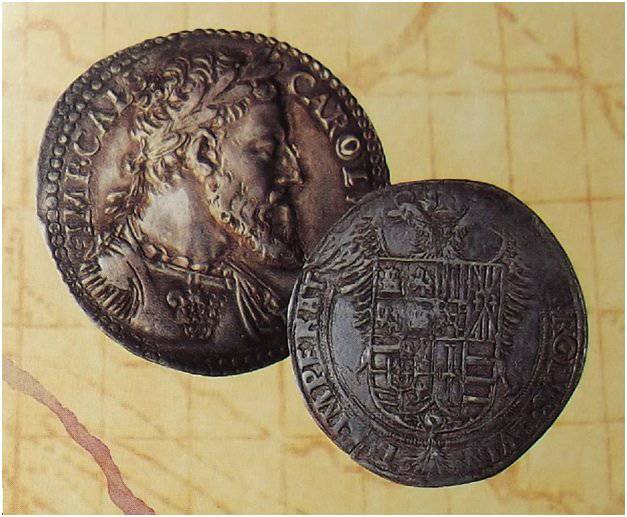
Naturally, to a large extent, these calculations for modern money are speculative, taking into account the past century, inflation, changes in the value of inventory, precious metals and stones, the industrial revolution, etc. But in general, in the absence of the best, they give a general idea.
To better understand the cost of pirate mining, you can cite as an example the average prices of some goods in England in the XVII-XVIII centuries. (while prices for almost the entire XVII century. did not change significantly; small inflation began in the last decade of the XVII century and remained like this at the beginning of the XVIII century):
a beer mug in a pub in 2 pints (just over a liter 1) - 1 pence;
a pound of cheese (a little less than half a kilo) - 3 pence;
a pound of butter - 4 pence;
pound bacon - 1pense and 2 farthing;
2 pounds of beef - 4 pence;
2 pounds pork tenderloin - 1 shilling;
pound herring - 1 penny;
live chicken - 4 penny.
The cow cost 25-35 shillings. A good horse was worth from pounds 25.
All captured loot was placed before the division at a certain place on the ship under the guard of quartermaster (assistant captain who was following the discipline on the ship). As a rule, the loot was divided at the end of the voyage. First of all, even before the division, from the general fund a predetermined compensation was paid to pirates who were injured and injured during the battle. Then they received additional shares distinguished themselves in battle. Also, out of turn, remuneration (service fee) was paid to a surgeon, a carpenter and other team members who helped navigate. Naturally, all of the above could also receive their shares in production on a general basis.
Generally, the laws of pirates of the XVII-XVIII centuries. were surprisingly progressive for their time. Injured and injured were entitled to a predetermined compensation, and out of turn. And this at a time when social security legislation, even in the most advanced countries of Europe, was still in its infancy. A simple worker who was unable to work due to a work injury in most cases could only count on the goodwill of the owner, which did not always happen.
When dividing the spoils, everyone swore an oath on the Bible that he did not conceal anything and did not take too much.
Naturally, only gold and silver could be precisely divided. The rest of the goods, and they could be anything: spices, tea, sugar, tobacco, ivory, silk, precious stones, porcelain, and even black slaves, were usually sold to dealers in ports. In general, the pirates tried to get rid of bulk cargo as soon as possible. The proceeds were also divided among the team. Sometimes, for various reasons, the seized goods were not sold, but also shared. In this case, the property was estimated very roughly, which often entailed quarrels and mutual offenses.
In the West Indies, in the attack on the Spanish settlements, the pirates always tried to capture as many prisoners as possible, for which a ransom could be obtained. Sometimes, the amount of ransom for the prisoners exceeded the value of other valuables captured during the campaign. From the prisoners, for whom it was not possible to get a ransom, they tried to get rid as soon as possible. They could have been thrown in a looted city or, if the prisoners were on the ship, landed on the first island (so as not to feed in vain) or simply thrown overboard. Some prisoners for whom they did not give a ransom could be left on a ship for several years or sold into slavery. At the same time, contrary to the widespread opinion now, in that era not only black Africans could become slaves, but also completely white-skinned Europeans, who were also bought and sold. It is curious that Morgan himself in his youth was sold for debts in Barbados. True, unlike Africans, whites were sold into slavery only for a certain period. Thus, the British in the colonies of the West Indies in the XVII century. there was a law: anyone who owes 25 shillings is sold into slavery for a year or six months.
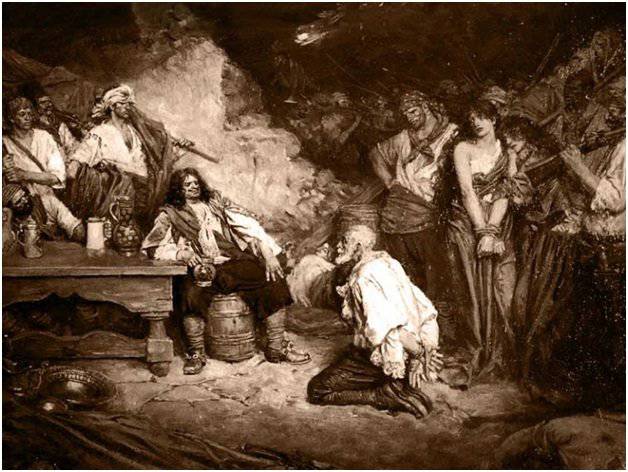
It is curious that sometimes pirates exchanged prisoners for the goods they needed. So, Blackbeard once exchanged a group of prisoners with the authorities for a chest with drugs.
The most desirable booty of pirates in the Indian Ocean were large, heavily loaded, merchant ships of the East India Company, which transported a variety of goods from India and Asia to Europe. One such ship could carry cargo on 50 thousand British pounds in the form of silver, gold, precious stones and goods.
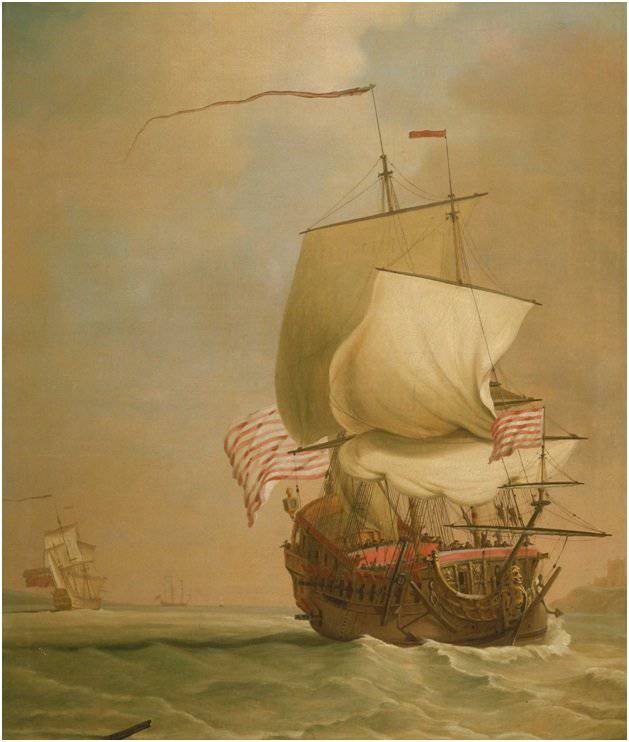
In general, historians suggest that the pirates of the Indian Ocean were the most successful in the history of piracy. So, when it came time to divide the booty, rarely one of them got less than 500 pounds. Whereas for filibusters of the Caribbean, it was considered lucky to get at least 10-20 pounds.
This is clearly shown by the following examples.
In 1668, about five hundred pirates led by Morgan attacked Portobello, a Spanish port on the coast of Panama. After plundering Portobello and taking the townspeople as hostages, Morgan demanded a ransom from the Spaniards who had fled to the jungle. Only after receiving a ransom in the amount of 100 thousands of Reais, the pirates left the looted city. In the next, 1669, Morgan, at the head of a whole pirate flotilla, attacked the Spanish cities of Maracaibo and Gibraltar in New Venezuela. The booty of the pirates was gold, silver and jewels totaling 250 thousands of reais, and that is not counting goods and slaves.
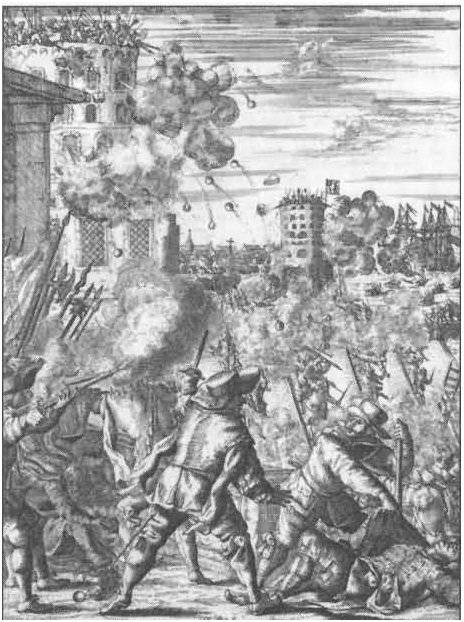
This extraction of the filibusters of the Caribbean Sea, although it seems large, cannot be compared with the prey of the pirates of the Indian Ocean.
For example, when Thomas Tew captured a merchant ship sailing to India in 1694 in the Red Sea, each team member received from 1200 to 3 thousands of pounds with gold and precious stones — a lot of money at that time. Tew’s share was 8 thousand pounds.
Henry Avery in 1696 seized gold, silver and precious stones in the Red Sea on the Hansway merchant ship for a total of 600 thousand francs (or roughly 325 thousand pounds).
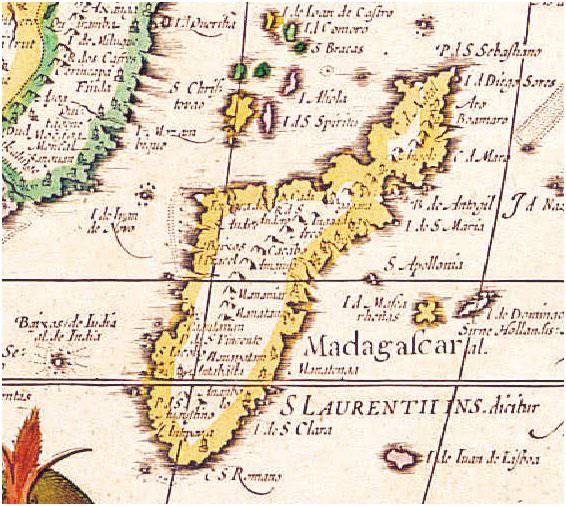
The pirates of the Indian Ocean also hold the record for capturing the largest booty in the history of piracy of all times and peoples. In 1721, close to the shores of Reunion Island in the Indian Ocean, the English pirate John Taylor captured the Portuguese merchant ship Nostra Senora de Cabo, carrying cargo worth 875 thousand pounds! Each of the pirates then received, in addition to gold and silver, several dozen diamonds. It is difficult to imagine how much this cargo would cost now.
To be continued.
Information